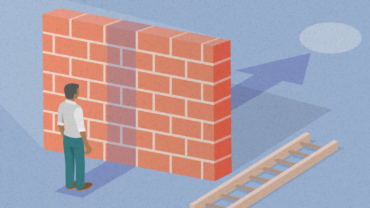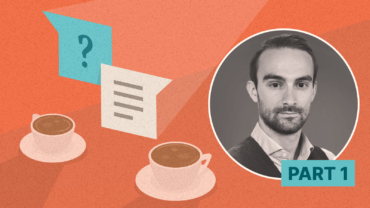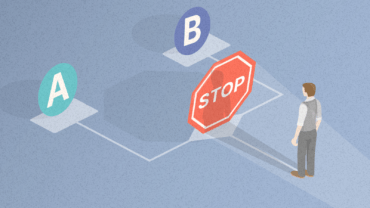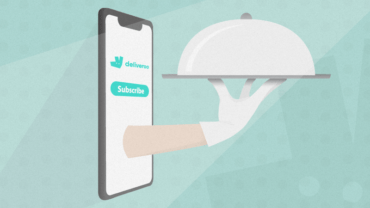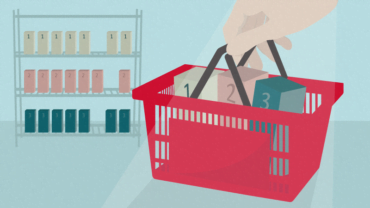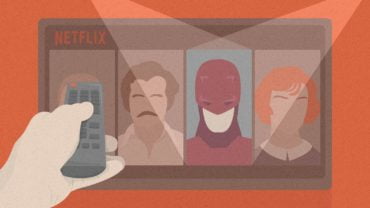How to Use the COM-B Method for Behavioral Change in Business
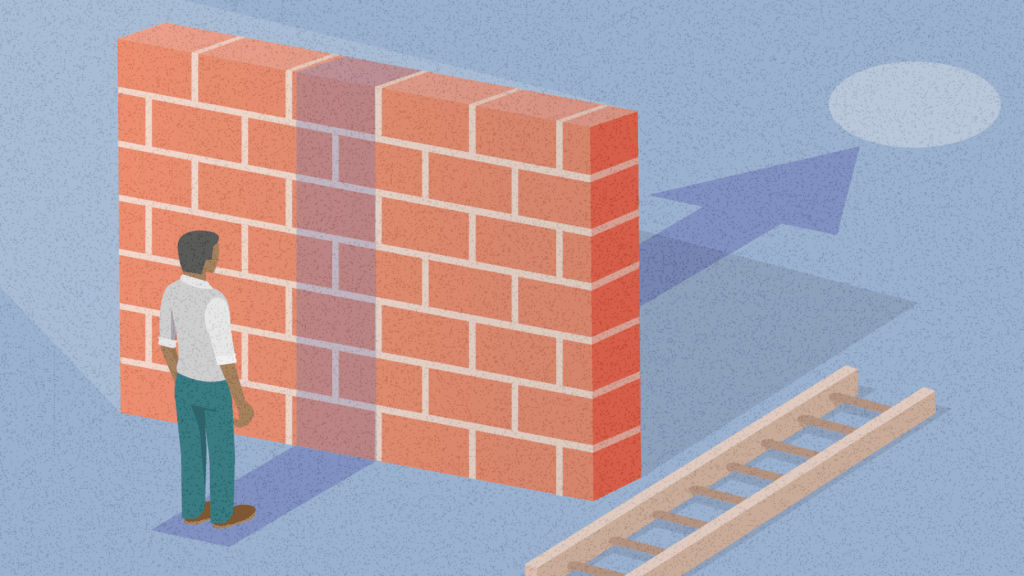
There are two components to changing behavior: decreasing friction and increasing motivation. Yet marketers get hooked on the additive side of the equation, forgetting to ask, “What barriers are holding my customers from taking action?”
In this article, you’ll discover:
- Why people who are highly motivated to be your customer won’t be if there are too many barriers;
- The importance of analyzing a customer journey to uncover points of uncertainty; and
- Ideation prompts to help you figure out barriers to action.
You exit the highway, an empty fuel tank alert having glared at you like an angry bird for the past 12 miles. All you want to do is fill up on gas and get the heck out of dodge. You’ve been running behind all day and would give anything for a spare 5 minutes to catch up on emails.
You’re in luck! You happen to have pulled into a gas station with filling station attendants. You know, the people who fill your gas tank, clean your windows, and in some cases even check your oil if you ask.
Because you’re running low on time and have a general distrust of the gas pump’s sanitary situation, you’re highly motivated to have someone else do it for you. Still, you don’t use the services of the filling station attendant. Why?
Just because people are motivated doesn’t mean they’ll take action.
First off, you have no idea this service exists. The employees hang out by the car wash without any special attire marking them as gas station attendants. There are no signs to advertise this service. And furthermore, even if you did know of this service’s existence, you don’t know if you should tip them $2, $5, or more.
Just because people are motivated doesn’t mean they’ll take action. Before adding another element of motivation — the endowment effect, social proof, loss aversion, etc. — first figure out what the barriers are to performing the desired action. What’s standing in people’s way? What’s holding people back?
This is the basis of the COM-B model for behavioral change in purchase decisions.
Capability + Opportunity + Motivation = Behavior
Too much attention is paid to customer motivation. But not without reason, of course. Motivation is a highly impactful part of the consumer buying process and can be structured as an entire ecosystem, like one highly successful fitness app did to dominate the market. We, as humans, are wired to think about the additive side of an equation before the subtractive side.
Research shows that when humans problem-solve, they default to solutions that add features, even when removal is more effective. This type of thinking — gimme more — can destroy an otherwise fantastic customer offering.

Discover ground-breaking ideas and fascinating solutions.
Changing your customers’ behavior is not just about determining what motivates them to do something, it’s also about uncovering all the reasons why they don’t do something. The don’t reasons are often caused by barriers.
Changing your customers’ behavior is not just about determining what motivates them to do something, it’s also about uncovering all the reasons why they don’t do something.
Ever wanted to try an exotic dish but ended up chickening out? (no pun intended) Why is that? It wasn’t a lack of motivation, but you were probably unsure of how to eat it or whether you’d even like it. Or maybe you were simply never given the opportunity to taste it.
Ever wanted to try a fun activity while on vacation but decided not to go ahead with it? It also probably wasn’t a lack of motivation that stopped you. Perhaps you were afraid of looking stupid in front of other people; you weren’t sure how it worked and were afraid to ask; or there were no suitable time slots. Either you didn’t have the capability or you didn’t have the opportunity.
So before you add another motivator to get your customers to do what you want, think about what you can remove instead.
Are customers capable of doing what I want them to?
Capability is defined as the individual’s psychological and physical capacity to engage in the activity concerned. It includes having the necessary knowledge and skills. Consider the example with the filling station attendant.
- Are customers capable of easily maneuvering towards a gas pump with a station attendant present?
- Do customers understand what activities the station attendant performs?
- Do customers know how the service works?
- Are customers aware of whether they should pay for the service or not?
Leaving questions of capability unanswered may result in a highly motivated customer incapable of taking action. While capability deals with a person’s mental and physical ability to perform a task, it’s the business owner’s responsibility to facilitate capability in order to make action possible.
Do customers have an opportunity to take action?
Opportunity is defined as all the factors that lie outside the individual that make the behavior possible or prompt it. Again, the owner of the gas station might want to ask themselves:
- Do customers have the opportunity to know about this service?
- Are the service hours of operation optimal for use?
- Can customers see that station attendants are available?
- Can customers identify what a station attendant looks like?
If an opportunity does not arise to use a service or purchase a product, then even a highly motivated and capable customer will not take action. If a person knows how filling station attendants work and is able to easily maneuver their car to a pump, they still won’t be a customer if the operating hours are poor or if the service is not properly advertised.
As Yoda might say, without the opportunity to be a customer, a customer they will not be.
Ideation prompts to remove barriers
The COM-B model sounds all great in theory, but you’re a busy marketer, sales director, or entrepreneur who needs the practical down low. We’ve got it, because we’ve done it. According to MINDWORX’s Behavioral Strategy Director Michal Plevka, the COM-B model for behavioral change is a top pick in his arsenal of tools.
"First and foremost, we need to understand what's stopping customers from performing a desired behavior and how to remove those barriers."
Use this set of ideation prompts to ask questions about what might be creating barriers to action. Categorize these prompts around capability, opportunity, and motivation.
Questions about capability
- What information or instructions is the customer missing right now?
- What questions, uncertainties, or fears might customers have regarding the service or product? (ask this question at every step of the process)
- How can I make the call to action easier to understand?
- How can I make my language clearer?
- What abilities do customers need in order to do what I want?
- How can I make the desired behavior easier for customers to do?
- How can I teach customers how to do it?
- How much information do customers have to process at the same time?
- What can I do to make the information easier to process?
- How can I make choosing an option easier?
Questions about opportunity:
- What barriers in the environment can make it more complicated for the customer?
- How can I make the desired behavior easier to do? Or make the undesired behavior complicated?
- What would make customers perceive the desired behavior as difficult?
- How can I adjust the environment to allow or facilitate customer behavior?
- What can I change to better catch the customer’s attention?
- How can I make my offer stand out more and be more noticeable?
- What will make customers remember my product at the right time?
- What are the triggers to make customers recall our product at the right time?
Questions about motivation:
- How can I make the customer understand why they should want it?
- What need can it fulfill?
- What behavioral principles can I use to motivate customers?
- What type of reward can be offered to customers?
- How can customers be punished for not taking action?
- What value does the product/service bring to the customer?
- How can I better communicate value or demonstrate it somehow?
- How does the customer perceive the price? Expensive, cheap, appropriate?
- How can I convince the customer that the price is fair?
- How can we evoke the expectation of a price?
Strip barriers and add some flair
Only now, once barriers have been found and removed, can you add some zest to the mix. This is the part we as marketers and salespeople all too often skip ahead to. But once barriers have been removed, uncertainty has been addressed, and capabilities and opportunities have been considered, we can add the sprinkles on top.
This might be in the form of a special offer to incentivize and motivate customers to enact the desired behavioral change. Think about ways to make the offering more visually attractive, how to say it better, or ways to emphasize your message using social proof.
Think of all those brain processes that energize and direct behavior, not just goals and conscious decision-making, but subconscious drivers of choice like fairness, reciprocity, and loss aversion.
Key Takeaways
- Motivation is just one piece to the puzzle behind every purchase decision. People must also have the capability and opportunity to be your customer. With a will but not a way, a purchase can’t happen.
- Barriers can be straightforward, such as poor opening hours, or psychological such as high perceived effort or uncertainty. Emotional barriers may be harder to identify and that’s why it’s important to seek external input from customers and outsiders.
- Use ideation prompts to analyze barriers at every step of the way. One step of the process might require an additive solution, while another might require a subtractive one. Barriers to action, and reasons why they feel like barriers, will change throughout the process.

